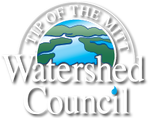In 2007, the International Joint Commission (IJC) launched a five-year International Upper Great Lakes Study (IUGLS). The IUGLS was established to identify and evaluate potential improvements to outflow regulation of Lake Superior to better address changing interests and climate, and resulting impacts on water flows, water levels, and associated resources in the Great Lakes region.
The IJC is an international organization created by the Boundary Waters Treaty, signed by Canada and the United States in 1909. The IJC seeks to prevent and resolve disputes regarding many of the lakes and rivers along the shared border of the two countries. This role includes approving the construction and management of works that affect levels and flows in boundary waters. The IJC also has a special role in helping the two countries restore and maintain the chemical, physical, and biological integrity of the waters of the Great Lakes.
The IJC appointed a 10 member binational Study Board of experts and public members, who commissioned research projects that engaged more than 100 scientists and engineers from the United States and Canada. Two task teams were formed, Lake Huron Outflow/St Clair River Task Team and the Lake Superior Regulation Task Team, and conducted studies related to water levels, physical processes, and outflow regulation of each part of the system.
The first phase of the IUGLS addressed changes in the St. Clair River. The report, Impacts on Upper Great Lakes Water Levels: St. Clair River, submitted to the IJC in December 2009, examined the physical processes and possible ongoing changes in the St. Clair River and the effects of such changes on the levels of Lake Michigan-Huron. The St. Clair River Report addresses the extent to which conveyance, the measure of the carrying capacity of a river channel, has changed since the last dredging of the St. Clair River, was completed in 1962.
The second phase of the Study focused on the formulation and evaluation of options for a new regulation plan for Lake Superior outflows. The report, Lake Superior Regulation: Addressing Uncertainty in Upper Great Lakes Water Levels, released in March 2012, focuses on how regulation may be improved to help meet the evolving needs of the interests groups in the upper Great Lakes. It also addresses restoration and multi-lake regulation as alternative approaches for dealing with extreme water levels beyond those addressed by Lake Superior regulation alone, and considers the important role that adaptive management can play to help the interests better anticipate and respond to extreme water levels in the future.
Impacts on Upper Great Lakes Water Levels: St Clair River
Full Report
Summary Report
Report findings:
- The difference in water levels between Lake Michigan-Huron and Lake Erie has declined by about 9 inches between 1963 (following the last major navigational channel dredging in the St. Clair River) and 2006.
- Three key factors contributed to this 9 inches change:
- A change in the conveyance (water-carrying capacity) of the St. Clair River accounts for an estimated 2.8 to 5.5 inches of the decline.
- Glacial isostatic adjustment (the uneven shifts of the earth’s crust since the last period of continental glaciations ended) accounts for about 1.6 to 2.0 inches of the fall.
- Changes in climatic patterns account for 3.5 to 6.7 inches; this factor has become even more important in recent years, accounting for an estimated 58 to 76 percent of the decline between 1996 and 2005.
- There has been no significant erosion of the channel along the length of the St. Clair River bed since at least 2000. Based on survey data collected in 1971, there appears to have been some enlargement of the channel between 1971 and 2000.
The Study Board Recommendations:
- Remedial measures (to address past damages or adverse effects) not be undertaken in the St. Clair River at this time.
- The need for mitigative measures (to address possible future changes that might result in adverse effects) in the St. Clair River be examined as part of the comprehensive assessment of the future effects of climate change on water supplies in the upper Great Lakes basin in Report 2 of the Study on Lake Superior regulation.
Lake Superior Regulation:
Addressing Uncertainty in Upper Great Lakes Water Levels
Full Report
Summary Report
Report Findings:
- Changes in the levels of the upper Great Lakes may not be as extreme in the near future as previous studies have predicted. Lake levels are likely to continue to fluctuate, but still remain within the relatively narrow historical range – while lower levels are likely, the possibility of higher levels cannot be dismissed. Both possibilities must be considered in the development of a new regulation plan.
- The Study Board identified a regulation plan that will be more robust than the existing plan and that will provide important benefits related to the maintenance of Lake Superior levels, environmental impacts, economic benefits, and ease of regulation.
- Restoration structures designed to raise Lake Michigan-Huron water levels would result in adverse effects on certain key interests served by the upper Great Lakes system.
- The potential for multi-lake regulation to address extreme water levels is limited by the uncertainty regarding future climatic conditions and water supplies, very high costs, environmental concerns, and institutional requirements.
- Adaptive management has an important role to play in addressing the risks of future extremes in water levels in the upper Great Lakes, though it requires leadership and strengthened coordination among institutions on both sides of the international border.
The Study Board Recommendations:
- Approve Lake Superior Regulation Plan 2012 as the new plan for regulating Lake Superior outflow.
- Seek to improve scientific understanding of hydroclimatic processes and impacts on future Great Lakes water levels as part of a continuous, coordinated bi-national effort that includes strengthened modeling and enhanced data collection.
- Apply an adaptive management strategy to address future extreme water levels and a Great Lakes-St. Lawrence River Levels Advisory Board should be established to help administer the strategy.
- Further study of multi-lake regulation in the Great Lakes-St. Lawrence system should not be pursued at this time.
International Joint Commission’s Advice to Governments on the Recommendations of the International Upper Great Lakes Study
Based on the results of these reports as part of the five-year, peer-reviewed Study and informed by diverse public input, including nearly 3,500 comments, the IJC provided its advice to the Governments of Canada and the United States on its International Upper Great Lakes Study.
Final Recommendations of the International Joint Commission:
- Endorses Lake Superior Regulation Plan 2012. The Commission finds significant public support for implementing the new plan that delivers robust performance under a wide range of possible hydrological conditions and has begun preparation of a Supplemental Order of Approval to implement the improved plan this year.
- Opposes further study of Multi-Lake Regulation. Consistent with previous Commission studies, the Commission finds further exploration of multi-lake regulation that includes new large-scale dams and channel enlargements is not warranted.
- Recommends further investigation to restore Lake Michigan-Huron water levels. The deepening and widening of the navigational channel in the St. Clair River in the early 1960s resulted in an estimated lowering of Lake Michigan-Huron water levels by 5 inches and subsequent erosion resulted in further lowering of 2.8 to 5.5 inches. On an exploratory level, the Study Board found that limited water level restoration was technically feasible and public support for more detailed analysis of such restoration was widespread. Therefore, the Commission recommends that the governments undertake further investigation of options to increase water levels in Lake Michigan-Huron by about 5 to 10 inches and that this investigation be funded, undertaken and concluded as quickly as practicable. The Commission recognizes if such a measure is in place it could take up to a decade for its full effect on Lake Michigan-Huron water levels to occur. The Commission specifically recommends that this investigation should include:
- exploration of options that would provide relief during low water periods, but not exacerbate future high water levels; and,
- a comprehensive binational benefit-cost analysis and a detailed environmental impact study of potential structural options.
- Endorses implementation of a comprehensive Adaptive Management approach supported by Science and Monitoring. The Commission finds that management of the impacts of Great Lakes water level fluctuations could be improved through Adaptive Management – a flexible approach already embraced by governments that provides decision-makers with monitoring and modelling information that support review and adjustment of programs and policies. The Commission intends to provide recommendations based upon the final report of our International Great Lakes-St. Lawrence River Adaptive Management Task Team. The Commission also endorses a suite of recommendations to support Adaptive Management that include periodic bathymetric surveys and maintenance of streamflow gauges in connecting channels as well as evaporation monitoring instrumentation installed by the Study.
Additional Information
International Joint Commission (http://ijc.org/)
International Upper Great Lakes Study (http://iugls.org/)
(Information compiled from the International Joint Commission, International Upper Great Lakes Study Board, and The International Great Lakes – St. Lawrence River Task Team)

